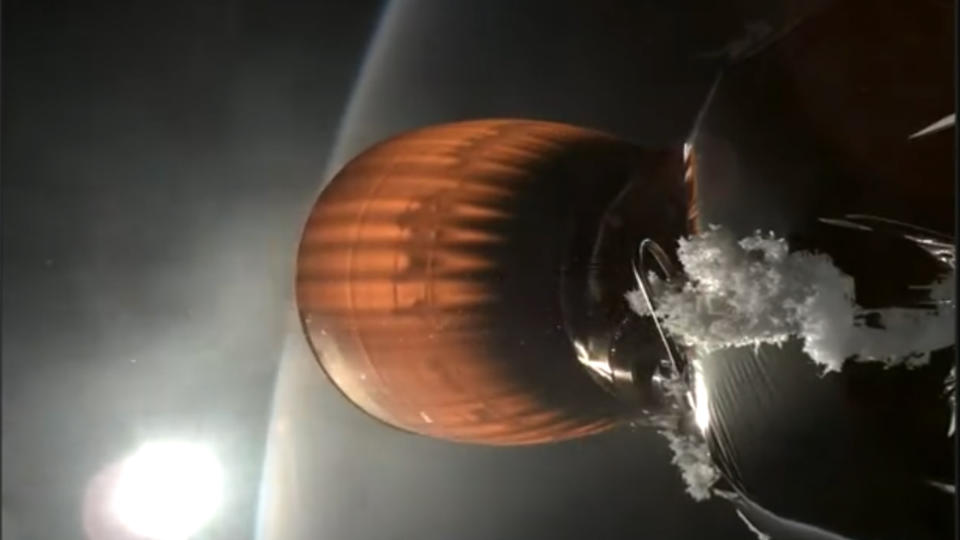SpaceX finds cause of Falcon 9 failure, eyes return to flight as soon as July 27
When you buy through links on our articles, Future and its syndication partners may earn a commission.

SpaceX says it has identified and fixed the problem that caused its Falcon 9 rocket to fail during a launch earlier this month.
That failure occurred on July 11, as a Falcon 9 carried 20 of SpaceX's Starlink broadband satellites toward low Earth orbit. The rocket's first stage performed normally that day, but its upper stage sprang a leak of liquid oxygen, which prevented it from conducting an orbit-raising burn as planned; the Starlink satellites were deployed too low as a result and came back down to Earth in relatively short order, burning up in our planet's thick atmosphere.
The cause of the leak is a mystery no longer. It resulted from "a crack in a sense line for a pressure sensor attached to the vehicle’s oxygen system," SpaceX announced in an update on Thursday afternoon (July 25). "This line cracked due to fatigue caused by high loading from engine vibration and looseness in the clamp that normally constrains the line."
The upper stage's single Merlin engine performed its first burn as planned on July 11, entering a coast phase in an elliptical orbit right on schedule. But the leak prevented the engine from conducting a second burn, which was designed to circularize its orbit ahead of Starlink satellite deployment, according to SpaceX's anomaly investigation, which was overseen by the U.S. Federal Aviation Administration (FAA).
The leak "led to the excessive cooling of engine components, most importantly those associated with delivery of ignition fluid to the engine," the company wrote in Thursday's update. "As a result, the engine experienced a hard start rather than a controlled burn, which damaged the engine hardware and caused the upper stage to subsequently lose attitude control."
The upper stage was able to deploy all 20 satellites, but, as noted above, they didn't stay in orbit long.
SpaceX says it has taken action to prevent the recurrence of the anomaly.
"For near-term Falcon launches, the failed sense line and sensor on the second-stage engine will be removed," company representatives wrote in the update.
"The sensor is not used by the flight safety system and can be covered by alternate sensors already present on the engine," they added. "The design change has been tested at SpaceX’s rocket development facility in McGregor, Texas, with enhanced qualification analysis and oversight by the FAA and involvement from the SpaceX investigation team. An additional qualification review, inspection, and scrub of all sense lines and clamps on the active booster fleet led to a proactive replacement in select locations."
SpaceX has submitted its mishap report to the FAA. In a post on X on Thursday afternoon, the company said that it's "poised to rapidly return to flight as soon as Saturday, July 27."
RELATED STORIES:
— SpaceX Falcon 9 rocket suffers failure during Starlink satellite launch (video)
— FAA investigating SpaceX Falcon 9 rocket failure
The July 11 anomaly was SpaceX's first in-flight failure since June 2015, when a Falcon 9 broke apart while launching a robotic Dragon cargo capsule toward the International Space Station. The mishap led to the loss of the Dragon.
A Falcon 9 did, however, explode on the pad during preflight testing in September 2016. That anomaly also caused the loss of the rocket's payload, the AMOS-6 communications satellite.

